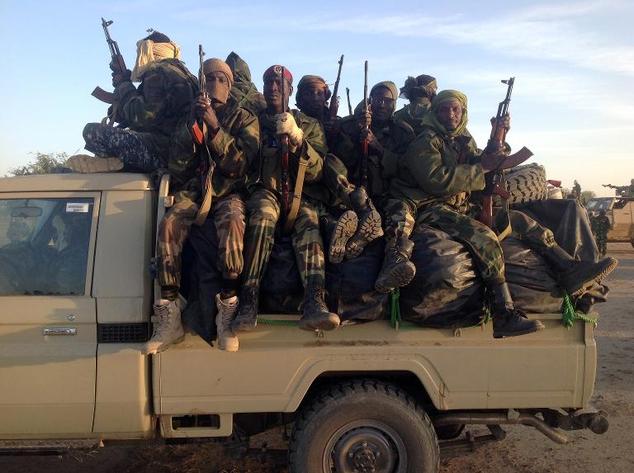Hundreds of fighters from Darfur, Chad fueling Libya’s current military strife, report says

Hundreds of fighters from Chad and Sudan’s Darfur region are feeding off instability in Libya, battling for rival factions, seeking to build rebel movements and engaging in banditry and arms trafficking, Geneva-based researchers said on Tuesday.
Failure to secure peace deals and reintegrate rebels in Chad and Sudan has led to a “market for cross-border combatants” linking those two countries and Libya, said a report by the Small Arms Survey group.
With desert regions already crisscrossed by Islamist militants, people smugglers and arms traffickers, there is a growing risk of destabilisation unless long marginalised communities can be integrated, it says.
The 179-page report largely focuses on the Teda, or Tebu, people inhabiting the Tibesti mountains in northern Chad that fringe the borders of Libya and Niger. They have played a central role in rebellions in all three countries.
Their most recent insurrection in Chad ended in 2011, but the Nato-backed uprising that toppled Libyan dictator Muammar Gaddafi the same year drew them in, providing easy access to weapons.
“This chaos attracts fighters – including armed opposition forces – from northern Chad and Darfur, and is already having repercussions in Chad and Sudan,” the report said.
“The Chad–Sudan–Libya triangle has once again become the centre of a regional system of conflicts. A notable consequence of these conflicts has been the re-emergence since 2011 of a regional market for cross-border combatants.”
Since 2012, a series of gold rushes from Darfur in the east to Algeria in the west had further destabilised the region.
Chad and Sudan support opposing armed factions in Libya, where loose and shifting rival alliances have been battling for power since 2014, creating rival governments in Tripoli and the east of sprawling Libya. Rebels from both countries have mostly aligned with their respective government’s enemies.
Competing Libyan armed factions frequently accuse each other of deploying mercenaries from sub-Saharan Africa.
A UN-backed government that arrived in the Libyan capital last year was meant to unify warring factions, but has largely failed to exert its authority.
Some 1,500 Sudanese fighters may currently be in Libya, mostly deployed with forces loyal to eastern-based commander Khalifa Haftar, said Jerome Tubiana, a co-author of the report.
About 1,000 Chadians are based with anti-Haftar forces, and several hundred more are either trying to stay neutral or are willing to work for either said, he said.
The report cited several examples of Chadian and Sudanese groups being stationed in the central desert region of Jufra, a recent flashpoint for fighting between pro-Haftar forces and their foes, and in Benghazi, where Haftar’s forces have been waging a long campaign against Islamists and other opponents.
The report argued that military-focused efforts to stabilise the region are unlikely to work, calling for socio-economic policies to integrate the Teda.
“The Libyan crisis and the issue of a jihadist presence in the Sahara will not be resolved by a military intervention in southern Libya or by placing Western soldiers along porous and virtually non-existent borders,” it said.
“The importance of the presence of the three states (Libya, Chad and Niger), not only militarily, but also in terms of providing services and development, cannot be underestimated.”
How to submit an Op-Ed: Libyan Express accepts opinion articles on a wide range of topics. Submissions may be sent to oped@libyanexpress.com. Please include ‘Op-Ed’ in the subject line.
- China’s reported Libya dealings raise regional power questions - January 02, 2025
- Disease control center confirms no human rabies cases in Libya - January 02, 2025
- Russian gas through Ukraine halts - January 02, 2025


